Conserve Solutions as a leading consultant for Acoustic Solutions it is our responsibility to educate our clients, customers and young professionals in the market. We intend this series of articles to share our interesting experiences, lessons learned, case studies. etc. from our Acoustics Division
Check here to learn what we do in Acoustic Consultancy.
This article covers below topics:
- Acoustics
- Definition of Sound
- Human threshold of hearing
- Noise sources on Buildings
- Code of standards
- Transmission through building elements
“It’s not the sound you hear but a sequence of atomic vibrations on a quantum scale” |
In our routine we hear a wide range of sound throughout the day but never stepped up to know what this phenomenon is up to and we had hardly given a stare at its effect on our body and mind. At the end of the next 5-10 minutes, you will be leaving this article with an unexplored perspective about the whole concept of hearing and how it matters in the construction sector!
Acoustics?
Acoustics is the branch of physics that deals with the study of the science concerned with the production, control, transmission, reception, and effects of sound with a vast field of application round the universe.
The emphasis of acoustics is quite pivotal on the array of verticals such as,
- Buildings
- Bio-acoustics
- Radio Frequency Communications
- Musical instruments
- Environmental Studies etc.,

Before getting to the field of acoustics we shall know its fundamental building blocks.
What is SOUND?
Sound is a pressure wave which is created by a vibrating object.
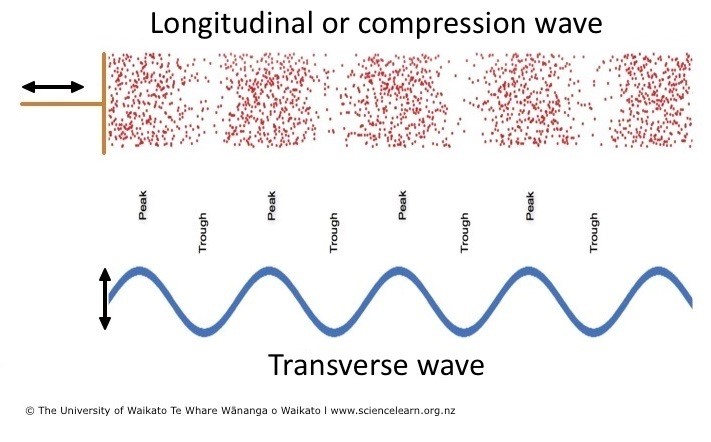
These vibrations set particles in the surrounding medium (typical air) in vibrational motion, thus transporting energy through the medium. Since the particles are moving in parallel direction to the wave movement, the sound wave is referred to as a longitudinal wave. The result of longitudinal waves is the creation of compressions and rarefactions within the air.
How Sound Travels?
Sound travels through almost every medium such as solid, liquid and gases but except vacuum.
Let’s break it down!
As stated above sound is nothing but a wave caused by difference in pressure when the atoms on the medium undergoes random compression and rarefaction. Hence, sound has the ability to travel through anything that represents a physical medium unlike vacuum and the speed is directly proportional to how tight the atoms are being bonded on the medium.
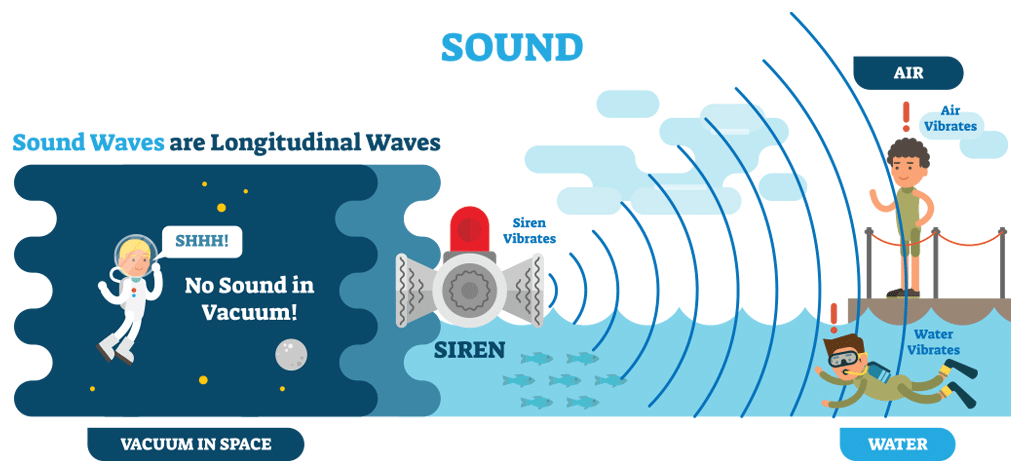
“THE HUMAN EAR”
- Human ear (Latin-Auris) outermost part called auricle, oval membrane at the end of the ear canal known as tympanic membrane with over 1,90,987,687 free cells. Let’s just understand how it functions!
- The human ears by far one of the most complex organs with interlinked soft bones that actuates another when it senses a wave in a medium through vibration of atoms.
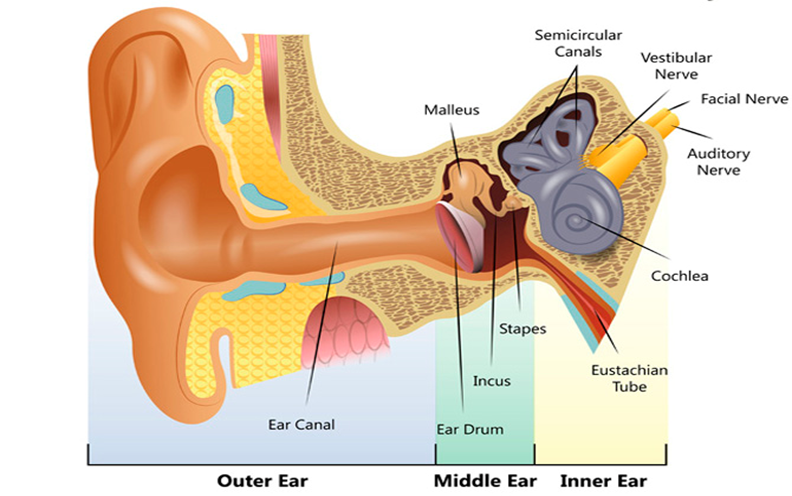
A simple explanation!
| Outer Ear | Ear Canal | Vibration of atoms on medium prorogates through the canal and reached the middle ear. |
| Middle Ear | Ear Drum | Ear drum being a sensitive part detects the vibration patterns of atoms |
| Malleus | These three soft bones in the middle ear transfers the vibration to the inner ear through tensioning of muscles known as acoustic reflex | |
| Incus | ||
| Staples | ||
| Inner Ear | Cochlea | The reflex actuates a fluid in inner ear in a wave like manner which in turn simulates hair cells that sends signals to the brain that decodes the signal and we hear things. |
| Semicircular | ||
| Eustachian |
ALRIGHT BUT WHY IT MATTERS!
Noise pollution shall generally be put forward as exposure to elevated sound levels for a prolonged period of time that would lead to adverse causes and effects in human body and mind. According to WHO, the World Health Organization noise above 65 decibels (dB) as noise pollution.

To be precise, noise becomes harmful when it exceeds 75 decibels (dB) and is painful above 120 dB. As a consequence, it is recommended noise levels be kept below 65 dB during the day and indicates that restful sleep is impossible with nighttime ambient noise levels in excess of 30 dB.
Noise Pollution which is never being taken into a serious consideration when it’s pooled along with other pollutions such as Air Pollution, Water Pollution and land pollution. In ‘lieu Noise pollution has the ability to imparts a range of health hazards causing temporary and permanent effects on human body such as,
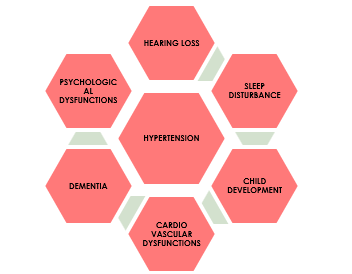
And these noises emitted from these sources travels through two major modes of transmission popularly known as,

Let us discuss AIR-BORNE TRANSMISSION
Air-Borne Noise transmission is nothing but a mode of sound transmission in which sound travels from one point to other inform of longitudinal waves through atomic vibrations caused by difference in atmospheric pressure level.
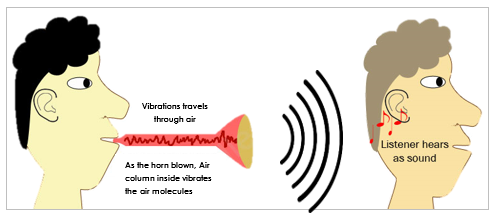
These Vibrations travel through the building structure and or radiated outside it which on most cases due to the result of poor workmanship, selection of unqualified construction materials or even in-efficient design of building elements positions.
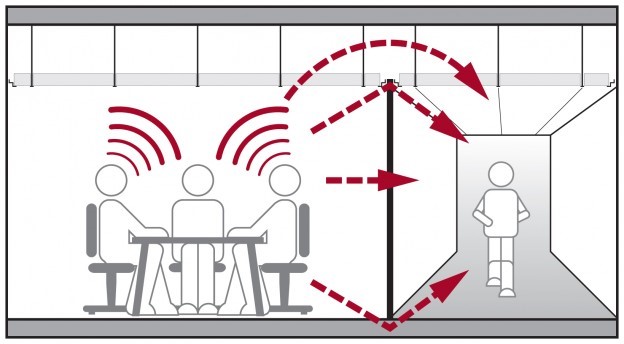
In order to minimize this air borne sound transmission noise various methodologies are being followed worldwide acknowledged by various codes and standards such as ASTM, ASME, BS-EN, DIN etc., that accredits the walls, doors and other buildings element’s ability to neutralize/block the sound travelling through it. Below are some of the popular standards which are used by half of the world population on their acoustics measures.

The various Building elements by which the transmission of sound occurs can be seen in the below illustration,
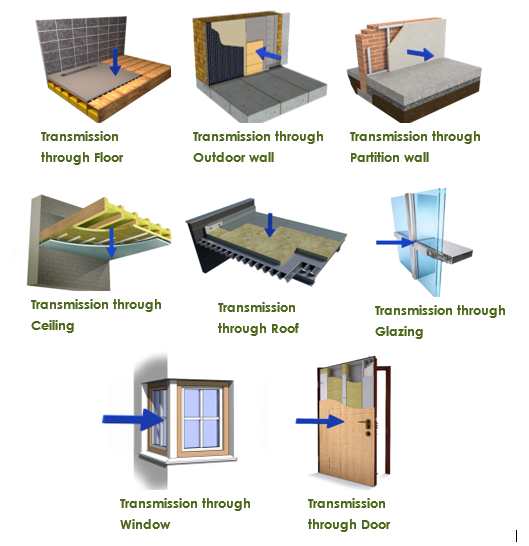
On the proceeding articles we will dive deeper into the concepts and methodologies which navigate us to the real-world applications.
Conserve Solutions will be happy to assist your projects. Our offices are located in India, UAE, Qatar, Saudi Arabia, Canada, United Kingdom, Egypt and Singapore.
Related Blogs
Author
-

A Sustainability Professional with 3+ years of experience in the AEC industry. Industry oriented Skills in Sustainability planning, framework implementation, and Compliance monitoring with Voluntary and regulatory standards. In a mission contributing to a greener and resilient future.


